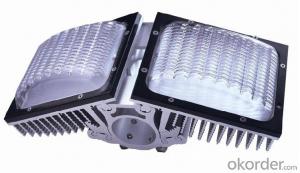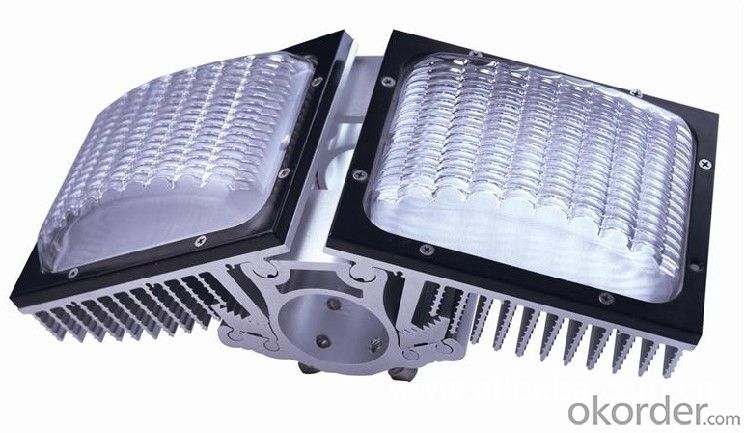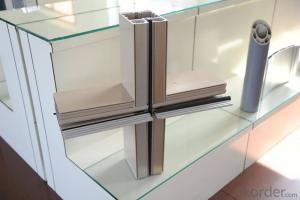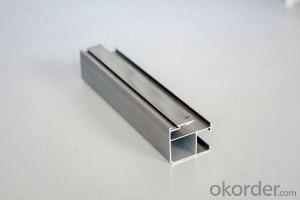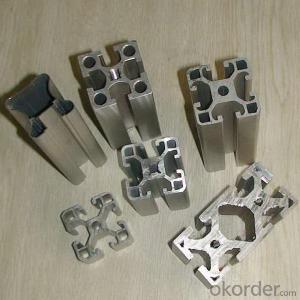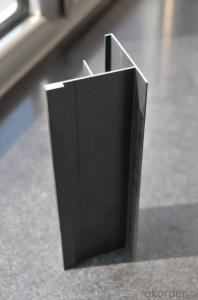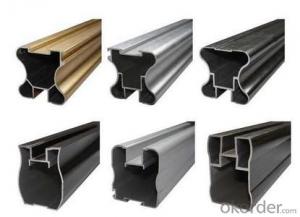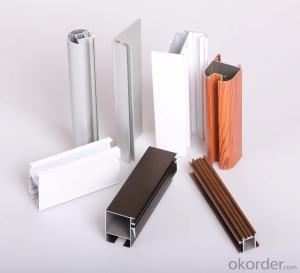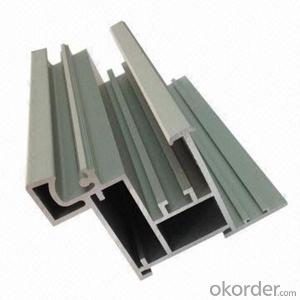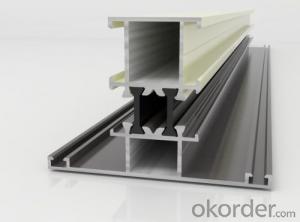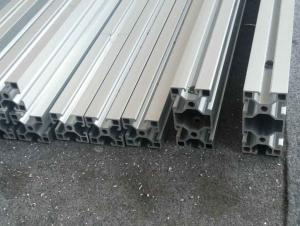Aluminum Alloy Profile Accessories for LED Frame
OKorder Service Pledge
OKorder Financial Service
You Might Also Like
Weare the largest aluminum profile manufacture in
The detail descriptions of aluminum profile as bellowing:
Alloy Aluminum 6063,6061,6005,6082 or customer nominated | |
Temper | T3, T4, T5, T6 and other |
Surface | Anodize, electrophoresis, powder coating, PVDF coating, wood grain painting, etc. |
Colour | Any colour based on Standard Germany RAL Mark |
Length | Not more than 16 meters |
Good Package | Inner plastic film /outside carton/wooden pallets |
Payment Method | T/T, L/C, etc |
Delivery Time | Normally 2-4 weeks, Delivery time can be consulted. |
Press Machine | 500-12500 tons all together 93 press lines. |
Fabrication | 1. LED frame; 2. Drilling; 3. Bending; 4. Cutting; 5. etc. |
Certificate | ISO/TS 16949,DNV,IRIS,CCS,AFA,etc. |
Dies | 1. Using our dies, no fee; |
2. Using customer drawing, opening dies, usually about 5~50 tons then the dies cost can be refunded. | |
3. Die cost is negotiable base on the order quantity | |
Capability | Annual output 800,000 tons |
- Q: How can I distinguish aluminum from aluminium oxide or electrophoresis aluminum or spray aluminium material?
- The electrophoretic material looks very textured, very uniform, and full range. Spray paint will not spray in some places, and the color is not as good as electrophoresis.
- Q: Are aluminum profiles suitable for historical or heritage restoration projects?
- Yes, aluminum profiles can be suitable for historical or heritage restoration projects. Aluminum is a versatile material that offers several advantages for restoration projects. Firstly, aluminum profiles can be manufactured to replicate traditional architectural features and designs, allowing for seamless integration and preservation of the historical aesthetics. Aluminum is also a lightweight material, making it easier to handle and install, especially in complex or intricate restoration projects. Additionally, aluminum is highly durable and resistant to corrosion, which is crucial for preserving the structural integrity and longevity of historical buildings or structures. Furthermore, aluminum profiles can be easily customized and fabricated to match the specific requirements of historical restoration projects. They can be shaped, cut, and finished to replicate the original architectural elements, such as windows, doors, trim, or decorative features. Moreover, aluminum profiles offer excellent thermal performance, providing improved energy efficiency and insulation for restored buildings. This can help reduce energy consumption, lower heating or cooling costs, and enhance the overall comfort of the space. While traditional materials like wood or steel have been commonly used in historical restoration projects, aluminum profiles offer a modern alternative that combines aesthetic appeal, durability, and sustainability. However, it is important to ensure that the use of aluminum profiles aligns with the preservation guidelines and regulations of the specific historical or heritage project. In conclusion, aluminum profiles can be a suitable choice for historical or heritage restoration projects due to their versatility, durability, lightweight nature, customization options, and energy efficiency. They can successfully blend modern functionality with historical aesthetics, contributing to the preservation and revitalization of our architectural heritage.
- Q: What are the different sealing options for aluminum profiles?
- There are several sealing options available for aluminum profiles, including anodizing, powder coating, liquid paint coating, and mechanical sealing. Anodizing is a popular choice, providing a durable and corrosion-resistant finish by creating a protective oxide layer on the surface of the aluminum. Powder coating involves applying a dry powder to the profile, which is then cured under heat to form a hard, smooth coating. Liquid paint coating can also be used, offering various colors and finishes, but may require more maintenance. Mechanical sealing involves using gaskets, tapes, or other sealing materials to create a tight seal between aluminum profiles. The choice of sealing option depends on the specific requirements of the application, such as desired aesthetics, durability, and environmental factors.
- Q: What does T6 mean in aluminum alloy sections?
- In aluminium alloy section, T6 means heat treatment process. T6 solid solution heat treatment after artificial aging state, suitable for solid solution after heat treatment, no cold processing (for straightening and leveling, but does not affect the mechanical properties of the limit) the following product T1~T7 process:T1: artificial agingT2: annealingT4: solution treatment plus natural agingT5: solid solution treatment with incomplete artificial agingT6: solid solution treatment plus full artificial agingT7: solid solution treatment plus stabilization treatment
- Q: This question asks whether aluminum profiles can be utilized for creating interior partitions and seeks reasons for their suitability.
- <p>Yes, aluminum profiles can be used for interior partitions. They are favored for several reasons: they are lightweight yet strong, offering durability and stability. Aluminum profiles are also resistant to corrosion, which makes them suitable for various environments. Their ease of installation and low maintenance requirements make them cost-effective. Additionally, they can be easily customized to fit various design needs, and their recyclability makes them an environmentally friendly choice.</p>
- Q: This question asks for guidance on selecting the appropriate size and shape of aluminum profiles for a specific application.
- <p>Choosing the right size and shape of an aluminum profile involves several steps. First, consider the load-bearing requirements and structural integrity needed for your application. Consult with engineering standards or use software that can simulate the stress and load on the profile. Second, consider the aesthetic and functional requirements, such as the profile's visibility and the need for specific features like slots or holes. Third, review the available profiles from suppliers, matching your needs with their offerings. Finally, prototype with the selected profile to ensure it meets all requirements before full-scale production. Always consult with aluminum profile manufacturers or suppliers for their expertise and recommendations.</p>
- Q: This question asks for a comparison between aluminum profiles and other building materials regarding their cost and performance.
- <p>Aluminum profiles are often more cost-effective than materials like steel or wood in the long run due to their durability and low maintenance requirements. They offer high strength-to-weight ratios, making them ideal for structures where weight is a concern. Additionally, aluminum profiles have excellent resistance to corrosion and weathering, which reduces the need for repainting or replacement over time. They are also energy-efficient, as they can help in reducing heat transfer, thus lowering energy costs for heating and cooling. However, the initial cost of aluminum profiles can be higher than some alternatives, but their long-term performance and low maintenance can offset this initial expense.</p>
- Q: This question asks about the impact of aluminum profiles on the thermal efficiency of a building.
- <p>Aluminum profiles can significantly affect the thermal performance of a building. They are excellent conductors of heat, which means they can transfer heat quickly. This property can be both advantageous and disadvantageous. On the positive side, aluminum profiles can help dissipate heat from the building, reducing the need for air conditioning. However, they can also lead to heat loss in colder climates, reducing the building's energy efficiency. To mitigate this, thermal breaks are often incorporated into aluminum profiles to reduce heat transfer. Additionally, insulating materials can be used alongside aluminum profiles to enhance the building's thermal insulation. Proper design and material selection are crucial to optimize the thermal performance of a building with aluminum profiles.</p>
- Q: Can aluminum profiles be used for stage and event structures?
- Yes, aluminum profiles can be used for stage and event structures. Aluminum is a lightweight and durable material that is widely used in the construction of stage and event structures. It offers excellent strength-to-weight ratio, making it suitable for creating complex and versatile designs while ensuring structural stability. Additionally, aluminum profiles are easy to assemble, disassemble, and transport, making them a popular choice for temporary or portable stage and event structures.
- Q: Can aluminum profiles be used in the construction of playground equipment?
- Indeed, playground equipment construction can incorporate aluminum profiles. Aluminum, a lightweight and resilient substance, proves itself impervious to corrosion, rendering it a prime selection for outdoor usage, including playground equipment. It confers both fortitude and stability, yet remains pliable, enabling the assembly of diverse structures and designs. Moreover, aluminum profiles lend themselves to customization, guaranteeing the playground equipment's safety and efficacy. In summary, implementing aluminum profiles in the construction of playground equipment proffers a dependable and enduring resolution.
Send your message to us
Aluminum Alloy Profile Accessories for LED Frame
OKorder Service Pledge
OKorder Financial Service
Similar products
Hot products
Hot Searches
Related keywords
